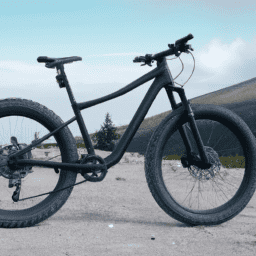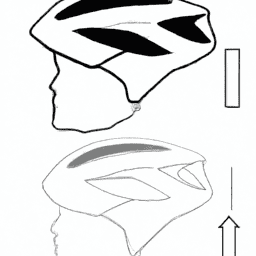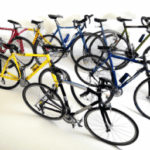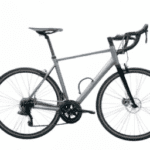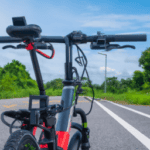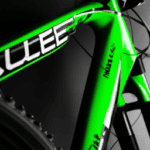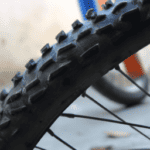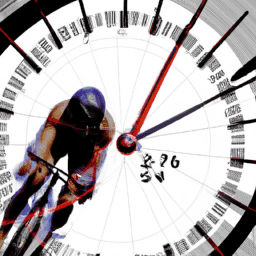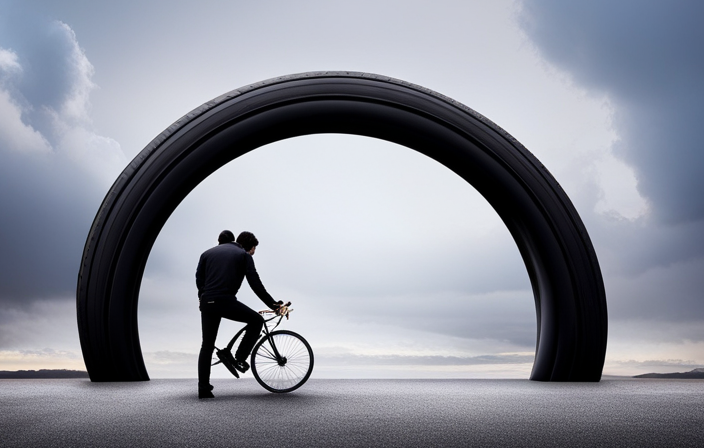If you’re in the market for a new bicycle, you might be curious about how much money you need to spend to acquire a quality one. The reality is, there isn’t a universal answer to this question, since the cost of a quality bicycle can greatly differ based on several factors.
However, by understanding a few key things about bikes and the market for them, you can make an informed decision about how much you should be spending to get a bike that meets your needs.
First and foremost, it’s important to determine your riding style. Are you planning to use your bike for commuting, recreational riding, racing, or something else entirely? Different styles of riding will require different types of bikes, and the cost of a bike can vary widely depending on its intended use.
Once you’ve determined your riding style, you can start to consider the type of bike that will best suit your needs, and from there, you can start to get a sense of how much you should be spending.
Key Takeaways
- The price of a good bicycle is affected by factors such as riding style, type of bike needed, personal preferences, and terrain.
- Different types of bikes serve different purposes, such as road bikes for speed, mountain bikes for durability, and hybrid or city bikes for commuting.
- Electric bikes offer assistance when pedaling but are more expensive and require maintenance for the battery and motor.
- Investing in higher quality components such as brakes, gears, tires, and suspension ensures a smoother ride, better handling, and longer-lasting parts. Factors such as brake options, gear ratios, tire options, and suspension options should also be considered.
Determine Your Riding Style
If you’re not sure how much to spend on a bike, it’s important to first determine your riding style. Are you interested in road or mountain biking? This will determine the type of bike you need and what features you should look for.
Road bikes are designed for speed and efficiency, with narrow tires, lightweight frames, and dropped handlebars. Mountain bikes, on the other hand, are built for durability and versatility, with wider tires, suspension systems, and flat handlebars.
Another factor to consider is whether you’re riding for fitness or commuting purposes. If you’re looking to improve your fitness and get a good workout, a road bike is a great option. If you’re using your bike to get around town, commuting to work or running errands, a hybrid or city bike may be more suitable.
Keep these factors in mind when deciding how much to spend on a bike, as the type of bike you need will affect the overall cost. Consider the type of bike that best fits your riding style and needs before moving on to the next step of determining your budget.
Consider the Type of Bike
When choosing a bike, it’s important to think about the type of ride you want and what terrain you’ll be on.
One of the biggest decisions you’ll need to make is whether you want a mountain bike or a road bike. Mountain bikes are designed for off-road terrain and can handle rougher terrain such as rocks, roots, and steep inclines. Road bikes, on the other hand, are designed for smooth pavement and are great for longer rides at faster speeds.
Another consideration is whether you want an electric or traditional bike. Electric bikes are becoming more popular and offer assistance when pedaling, making them a great option for longer rides or for those who may have physical limitations. However, they can be more expensive and require maintenance for the battery and motor. Traditional bikes, while requiring more physical effort, can be more affordable and easier to maintain.
When deciding between electric or traditional, consider how much assistance you want and the overall cost of the bike.
When considering the type of bike to purchase, it’s important to think about your personal preferences and the terrain you’ll be riding on. "Mountain vs. Road: Pros and Cons"and "Electric vs. Traditional: Which is Right for You?"are important factors to consider when making your decision.
Once you’ve decided on the type of bike, the next step is to think about the components and quality.
Quality Components vs. Budget Components
When it comes to choosing between quality components and budget components for your bike, you’ll want to pay attention to the brakes, gears, tires, and suspension. These components will greatly affect your bike’s performance, safety, and comfort.
Investing in higher quality components will ensure a smoother ride, better handling, and longer-lasting parts.
Brakes
The brakes on a good bicycle are like the safety net of a high wire act, providing a sense of security and control.
When it comes to brakes, there are two main types: disc brakes and rim brakes. Disc brakes offer better stopping power and are more reliable in wet conditions, making them a popular choice for mountain bikes, cyclocross bikes, and road bikes.
On the other hand, rim brakes are lighter and easier to maintain, but they can wear down the rims over time and are less effective in wet conditions.
Another important factor to consider when it comes to brakes is the material of the brake pads. There are different types of brake pad materials, including rubber, metallic, and ceramic.
Rubber brake pads offer good stopping power and are ideal for everyday riding, while metallic or ceramic brake pads are more durable and provide better stopping power for more demanding cycling disciplines. Ultimately, the type of brake pads you choose will depend on your riding style and needs.
When it comes to gearing, it’s important to choose the right setup for your riding style and terrain.
Gears
To get the most out of your cycling experience, you’ll want to choose the right gear setup for your style and terrain. Gear ratios play a significant role in how effortlessly you can pedal uphill or maintain speed on flat terrain. It’s essential to understand that the gear ratio determines how many times the rear wheel turns for every turn of the pedals.
So, if your bike has a 3:1 ratio, the rear wheel will turn three times for every turn of the pedals. Here are some points to keep in mind when choosing the right gear ratio:
-
Consider the terrain: If you plan on riding on steep hills, you’ll want a low gear ratio that allows you to pedal effortlessly uphill.
-
Choose the right shifting techniques: When shifting gears, it’s essential to maintain a steady pedaling rhythm and shift early to avoid putting too much pressure on the gear system.
-
Experiment: Different gear ratios work for different people, so it’s essential to experiment with different setups to find what works best for you.
With the right gear setup, you’ll be able to tackle any terrain and ride with ease. But, your gear is only part of the equation.
The next section will cover the importance of selecting the right tires for your bike.
Tires
Now that we’ve covered gears, let’s move on to tires. Tires are a crucial component of your bicycle as they are the only point of contact between you and the road. They affect your speed, comfort, and handling. When buying a bicycle, it’s important to consider the type and quality of tires that come with it.
There are two main types of tires: tubeless and clincher. Tubeless tires have become increasingly popular in recent years as they offer a number of advantages over clincher tires. They are lighter, provide better traction, and reduce the chances of getting a flat tire. However, they are more expensive and require more maintenance. On the other hand, clincher tires are more affordable and easier to maintain, but they are heavier and more prone to punctures. Another factor to consider when choosing tires is their width. Narrow tires are faster and more efficient on smooth roads, but they provide less cushioning and are not suitable for rough terrain. Wide tires, on the other hand, are more comfortable and provide better traction on rough surfaces, but they are heavier and slower. Consider your riding style and the type of terrain you’ll be riding on when choosing between narrow and wide tires.
Moving on to suspension, it’s important to consider the type and quality of suspension that comes with your bicycle.
Suspension
Considering the type and quality of suspension on your bike can greatly enhance your riding experience. There are two main types of suspension: front suspension and full suspension.
Front suspension, also known as a suspension fork, is located at the front of the bike and helps absorb shock from bumps and uneven terrain. Full suspension, on the other hand, has both front and rear suspension and provides increased shock absorption and traction on rough terrain.
The benefits of suspension on different terrains are numerous. For example, front suspension is ideal for cross-country riding on relatively smooth terrain, while full suspension is better suited for downhill riding or more technical terrain with rocks, roots, and drops. Suspension can also help reduce rider fatigue and increase overall speed and control.
When choosing a bike, it’s important to consider the type of terrain you plan to ride on and select a suspension system that matches your riding style and needs.
Reputation is an important factor to consider when choosing a bike brand.
Brand and Reputation
Cycling enthusiasts know that a high-quality bicycle brand with a trusted reputation can make all the difference in the overall enjoyment and longevity of a bike. When it comes to purchasing a bicycle, the brand comparison and customer reviews should be an essential consideration.
Here are three reasons why:
-
Quality: A reputable brand will ensure that the materials used in the construction of the bike are of the highest quality. This means that the bike will be more durable and will last longer, even with regular use.
-
Warranty: A brand with a trusted reputation will typically offer a better warranty. This means that if something goes wrong with the bike, you can rely on the manufacturer to fix the issue without too much hassle.
-
Customer Support: A high-quality brand will also have excellent customer support. If you have any questions or concerns about the bike, you can rely on the company to provide you with the support and guidance you need.
Considering these factors, it’s essential to do your research and choose a brand that has a good reputation. Once you’ve narrowed down your options, the next step is to test ride and compare prices to find the best bike for you.
Test Ride and Compare Prices
Before you hit the road with your new bicycle, it’s important to take it for a test ride and compare prices. This will allow you to get a feel for the bike and ensure that it is the right fit for you. When test riding, pay attention to the bike’s components, such as brakes, gears, and suspension. Make sure that everything is working properly and that the bike is comfortable to ride.
In addition to test riding, you should also compare prices to ensure that you are getting the best deal possible. Use a three-column and five-row table to compare prices from different retailers and online stores. This will allow you to see the different prices and choose the best option for your budget. Don’t forget to factor in the cost of any accessories you may need, such as a helmet, lock, or lights. When negotiating the price, be confident and knowledgeable about the bike’s value and any issues you may have found during the test ride. With these tips in mind, you’ll be able to find the perfect bicycle at a great price.
| Retailer | Bicycle Model | Price |
|---|---|---|
| Local Bike Shop | Trek FX 2 Disc | $650 |
| REI | Co-op Cycles CTY 1.1 | $599 |
| Amazon | Schwinn Discover Hybrid Bike | $349 |
| Walmart | Hyper Bicycles 700C | $179 |
| Target | Huffy 26"Nel Lusso Cruiser Bike | $149 |
Frequently Asked Questions
Where can I buy a good bicycle?
When looking to buy a good bicycle, consider factors such as intended use, frame material, and components. Brand recommendations include Trek, Specialized, and Giant. Check out local bike shops or online retailers for options.
How do I properly maintain my bicycle?
To properly maintain your bicycle, clean it regularly with a mild soap and water solution. Lubricate the chain and moving parts with a bike-specific lubricant. Avoid over-lubrication and use a rag to wipe off excess. Check tire pressure and brakes before every ride.
What safety gear should I wear while riding a bicycle?
Did you know that wearing a helmet can reduce your risk of head injury by 85%? It’s important to wear a properly fitting helmet and reflective clothing while cycling to increase visibility and safety on the road. As a technical expert, I highly recommend investing in quality gear for your rides.
Can I use a bicycle for commuting purposes?
Yes, you can use a bicycle for commuting purposes. There are various bicycle types suitable for urban commuting, each offering benefits like cost-effectiveness, health, and environmental friendliness. It’s a knowledgeable and experienced choice to opt for a bicycle for your daily commute.
What is the average lifespan of a bicycle?
Bicycle maintenance tips are key for extending the lifespan of your trusty two-wheeler. Keep an eye out for signs of wear and tear, such as rust and frayed cables, to ensure your ride stays safe and reliable.
Conclusion
Congratulations on making the decision to invest in a good bicycle! Remember that the amount you spend on a bike should reflect your riding style and your long-term goals.
As you consider the type of bike that suits you best, keep in mind the quality of the components you choose. A reputable brand can also give you peace of mind when making your purchase.
Think of your bike as a vehicle that can take you on a journey to explore the world around you. Just as a car with cheap parts may not get you far, a bike with budget components may not provide the reliability and performance you desire.
Take the time to test ride different bikes and compare prices, so that you can make an informed decision that will allow you to enjoy many miles of happy riding.
In the end, a good bicycle is an investment in your health, well-being, and happiness. Choose wisely, and your bike will become a faithful companion on your adventures, propelling you forward with ease and grace, like a trusty steed on a quest.
Happy riding!
